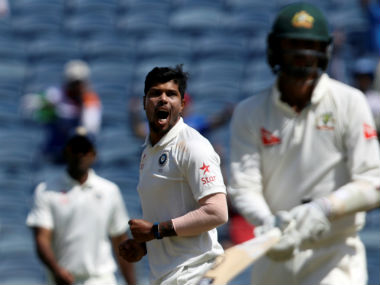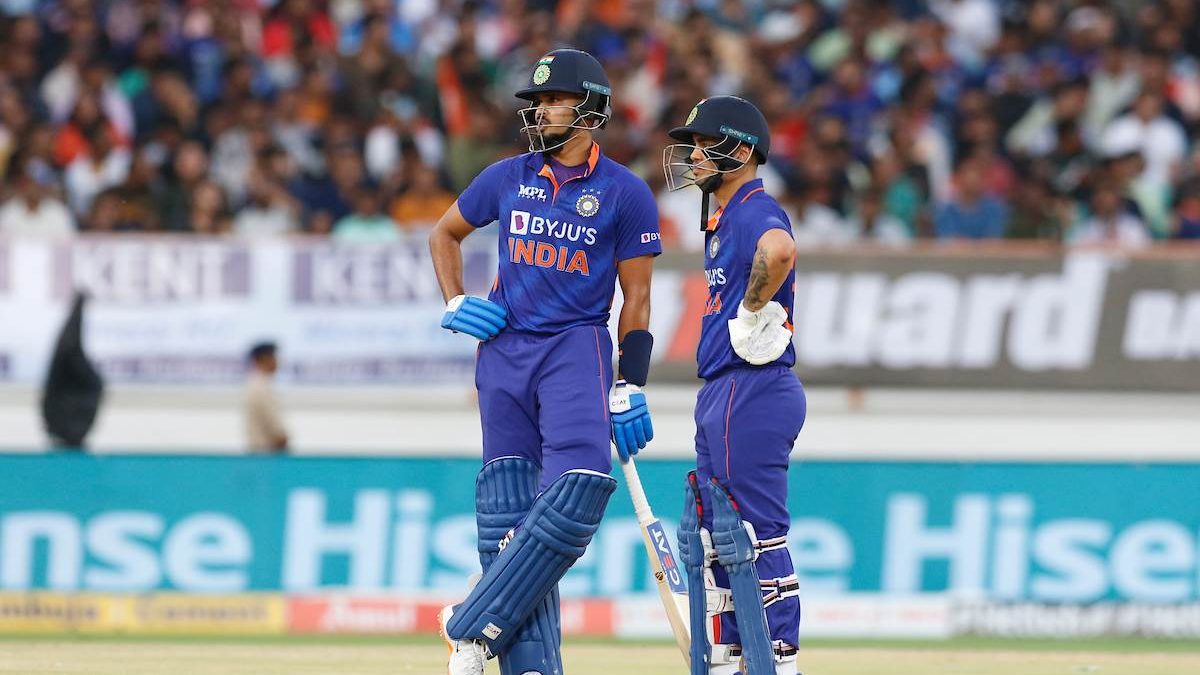A 333-run defeat within three days is usually the cause of inquest into a team’s shocking downfall. It doesn’t need a rocket scientist to evaluate what went wrong for India. The short duration of the match meant those pointers could be counted one’s fingertips.
They let Australia’s score drift to 260 in the first innings, didn’t apply themselves in the first innings’ collapse, and then dropped five catches in a desperate bid to make up the deficit. Add to it, the disastrous usage of DRS in this entire Test and a second collapse in two days , and it doesn’t paint a pretty picture.
“When we played good cricket, we won. We played poor cricket, and we lost. It is simple. When you win, you should stay calm and composed. You shouldn’t get overexcited. You should react the same way when you lose, and it is something that you take on the chin. So, this (loss) is no big deal. It is just another international game, and we take failures and losses as an opportunity to learn,” said Virat Kohli in the post-match conference.
Kohli’s words, in that light, are full of optimism. This is only a first loss since Galle in 2015, and despite the similarity of defeat here, the Indian captain looked ahead. Talking of learning though, the question can be asked if Kohli under-used his pacers, relying solely on spin to deliver the goods even when it didn’t seem to be working.
Holding back Umesh Yadav is a particular case in point. In the first innings, Kohli opted to start with Ishant and Ashwin, with Yadav coming on to bowl only in the 28th over of the innings. In the second innings too, he was brought on in the 28th over. It was clearly the plan to hold him back and use his reverse swing skills, albeit this pitch scraping the ball on both sides didn’t help matters.
For a moment, the first innings’ ploy is understandable. India’s efforts in the second innings though reeked of desperation in more ways than one. Kohli’s deployment of his spinners — on the afternoon of day two, and then again first thing early on day three — was a bid to mirror Australia’s bowling efforts, surprisingly. It was his obvious go-to plan, and twice in three days, when he should have been bowling, Yadav was left cooling his heels under the Pune sun.
When he did come on, both in the first and second innings, the impact he made was obvious. In the first, he struck with his second delivery. In the second, he controlled the scoring rate in parallel with the spinners, and toiled hard to get two wickets even as Australia set up a humongous fourth innings’ target. The fact that Ishant was used for only 3 out of 87 overs in that second innings led to the obvious question: in opting for two pacers, both of whom were under-bowled, did Kohli play one batsman short?
“If we had won, this question wouldn’t come up,” said the skipper in his own inimitable style. Yet, it doesn’t deflect from the under-utilisation of his pacers, particularly Yadav, who has come into his own in the past two years. Sample this dismissal of David Warner, a batsman he has got the better off on a few occasions previously, in the first innings.
Yadav bowled a tad outside off, the ball pitching on a good length. Warner went for it, his feet following his natural aggressive instinct, and he managed to get an inside edge onto the stumps. The dismissal can be deemed a touch lucky, but how many times this season has Yadav toiled hard and returned empty handed?
It happened in Rajkot first, when on day one, the Indian slip fielders decided to drop a few chances. Then, Wriddhiman Saha put one down too. Ben Stokes scored an aggressive hundred and India were under pressure afterwards. Through that innings, Yadav bowled with patience on a wicket that resembled the highway outside the stadium.
He finished with 2-112, when he should have taken a five-wicket haul instead. “It happens. Sometimes easy chances slip out, and at other times, fielders take the most astonishing catches. It is part of the game,” Yadav said afterwards, in his usual shy manner. It was almost as if he would have been at fault to ask his teammates to buck up and do some catching for all the chances he had created.
Here, it is important to appreciate the change he has undergone as a pacer since the 2015 tour of Sri Lanka, especially in working with Sanjay Bangar. The assistant coach had worked with Ajinkya Rahane in the second Test at Colombo, and the results were immediately visible in the second innings itself, when he stroked a match-winning hundred. For Yadav, this aspect has taken some time in becoming obviously apparent.
“We have done some work with his wrist position, and he is also taking shorter steps in his run-up that has helped him control his delivery stride at the crease,” said Bangar after day one. The second bit is true for Mohammed Shami as well; when he returned to Test cricket in West Indies (2016), there was a marked change in his pace all thanks to those shortened steps.
The wrist-position bit though applies solely in Yadav’s case at the moment. In a chat with this writer ahead of the England series, the pacer had admitted that his wrist position had been faulty for almost a year, spanning the tour of Australia in 2014-15.
Because of this, he was losing control of the ball at the time of delivery, and as such, there was inconsistency in his line and length. It was only after the 2015 IPL that he got down to rectifying this error, and since then, there has been a marked improvement in his control of the ball.
In that light, Yadav considers the Delhi Test against South Africa (2015) a pivotal marker in becoming a consistent member of the Indian bowling attack. And this change is reflected in his numbers: he has taken 29 wickets in 13 Tests going back to that series, more than a third of his career-haul of 77.
His average has come down from 36.83 to 33.96. Perhaps the most staggering change is in his economy: from 3.67 overall to 2.87 since November 2015. All of it was summarized in that one spell from Hyderabad, when Shakib al Hasan had no clue what to do against Yadav, full of control and intent. It might as well have been any other batsman, for the pacer was at his imperious best that day.
“There are a few positives to take away from this (Pune) loss, mostly pertaining to bowling,” said Kohli then, on Saturday. In a Test that otherwise is bound to be forgotten, Yadav showcased once more why he has been India’s best bowler in this home season.
On a pitch, where the likes of Ashwin and Jadeja ought to have feasted on the Australian batsmen, Yadav used consistent line and length to trouble them. On a highly abrasive track that rendered Ishant (and reverse swing) useless, he used pace as the replacement weapon.
He was the one Indian bowler undefeated by conditions on offer. Unmistakably then, at the top of Kohli’s very short ‘positives from Pune’ list is Yadav.


)




)
)
)
)
)
)
)
)